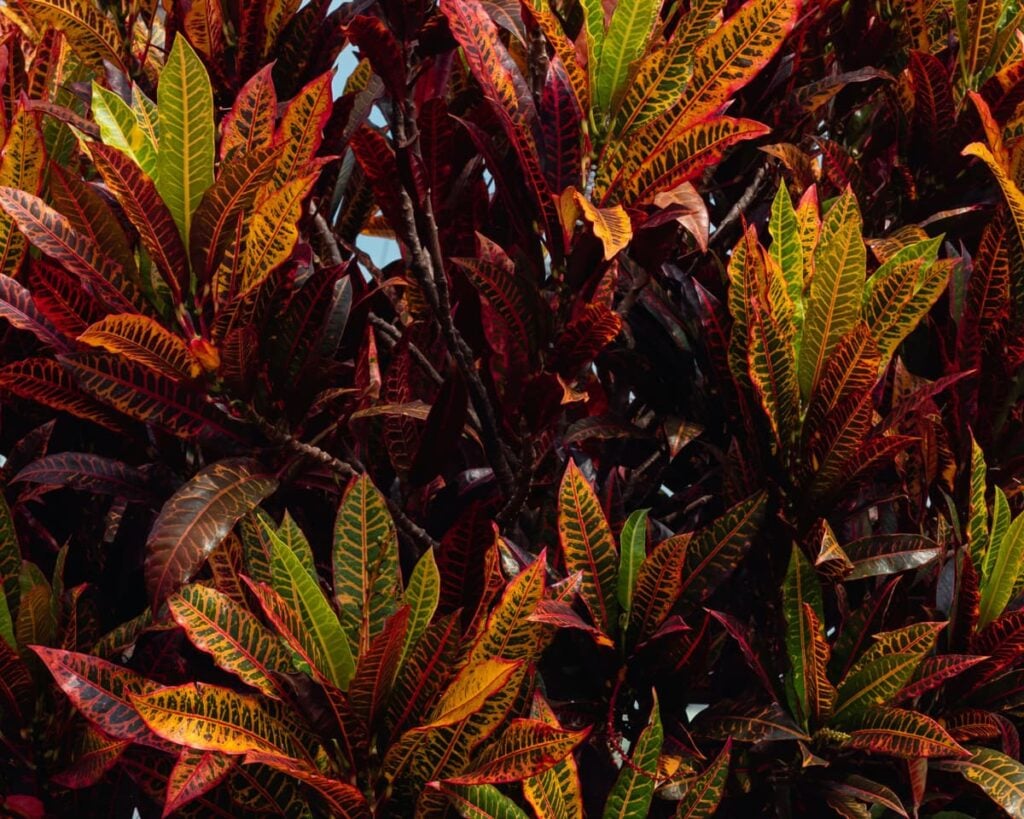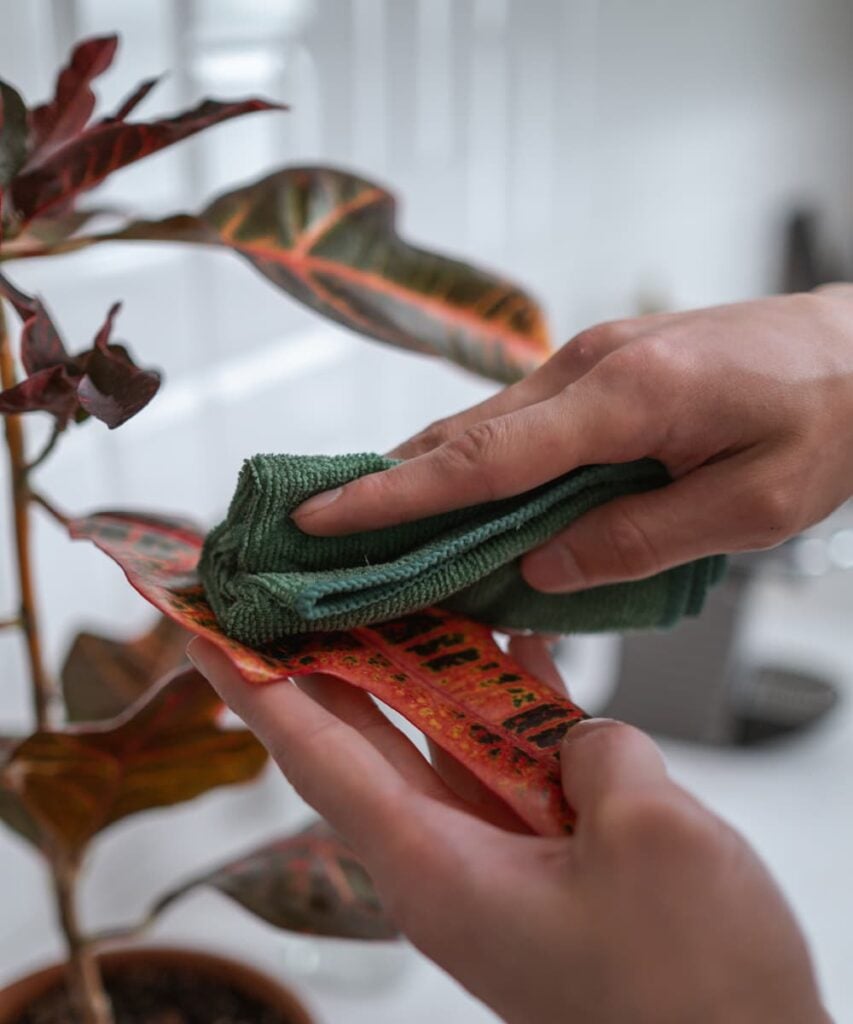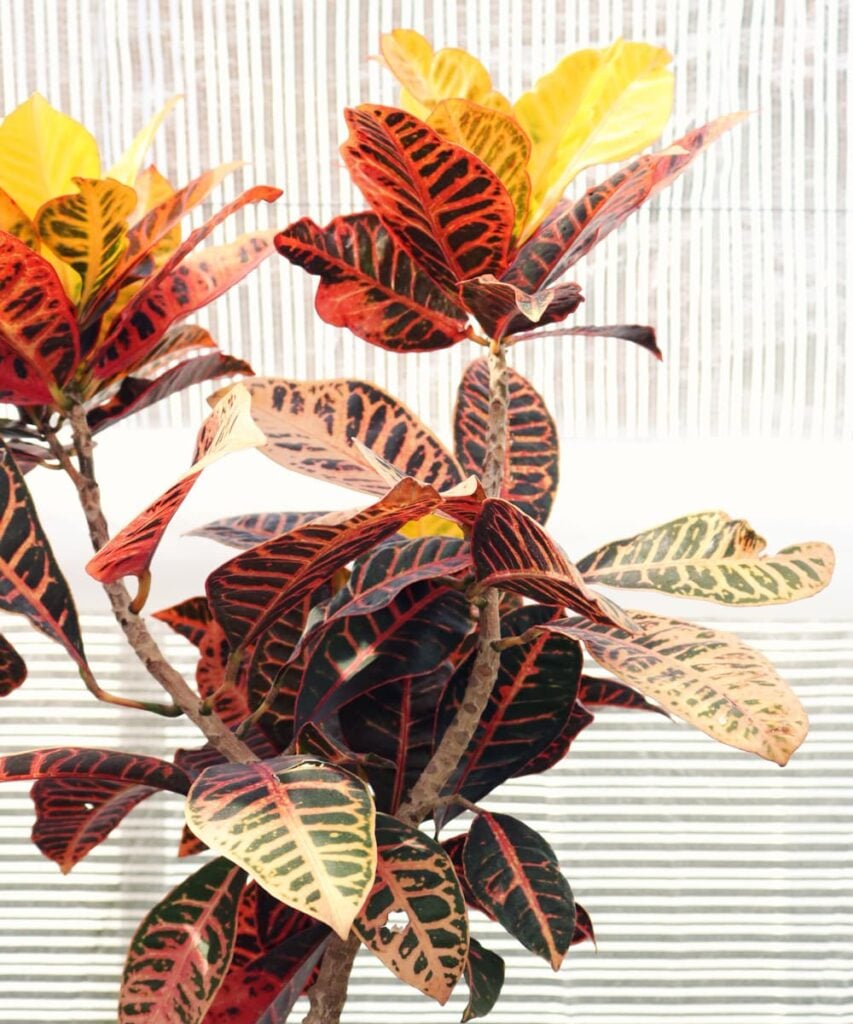Everything You Need to Know about Croton Care
Crotons are evergreen shrubs which have colourful foliage, limitless leaf forms and even a cultish following. Crotons are tropical plants which make spectacular houseplants. Check out our Croton collection.

Croton Care
Croton plants (Codiaeum Variegatum) are incredibly varied plants that are often grown as houseplants. The croton indoor plant has a reputation for being fussy, but in reality, if you know about caring for a croton houseplant properly, it can make for a resilient and hard-to-kill plant.
Light
First, on our list on how to care for your Croton plant is to put it in a sunny location where it can get direct sunlight or full sun of at least 6-8 hours each day to attain full, vibrant colours. If the leaves of your Croton plant are losing its colour, this could mean that it’s not receiving the right amount of sunlight. However, if the leaves are turning brown, this could mean that it’s getting too much sun.
Soil
A well-drained potting mix is perfect for the growth of Crotons. The soil must not carry a lot of moisture. Use a layer of organic mulch around the stem to help keep the soil moist while cooling the roots.
Water
Next on our list on how to care for your Croton plant is to water it when the soil is dry. This depends on the situation and the amount of light your Croton plant is receiving. It can be daily or weekly. Keep in mind that you should never let the soil stay dry for an extended period. Keep your Croton plant evenly moist in the summer, but do not overwater it as it can cause root rot, which is fatal to plants.

Temperature and Humidity
Adding to our list on how to care for your Croton is to put it in a room with high humidity or 40% to 80% humidity levels, such as your bathroom. Croton is a humidity-loving plant, so it’s best if you can mist it often, place it near a humidifier, or use a pebble tray.
Your Croton plant prefers room temperature, between 15°C to 21°C. Never allow the temperature to go below 15°C as it can cause the plant to lose its leaves, and it may even die.
Fertilizer
Another on our list on how to care for your Croton plant is to feed it with a low-nitrogen, slow-release, granular fertilizer once in spring and summer. Do not feed in the fall or winter.
Remember to follow the recommended amount of fertilizer and schedule to avoid fertilizer burn or plant burn.

Common Problems
- Symptom: Blisters on the plant’s leaves
Cause: Over watering - Symptom: Leaf drop
Cause: Excess cold temperature, over watering. - Symptom: Discolour leaves (Anthracnose)
Cause: Bacteria - Symptom: Discoloured leaves/brown leaves
Cause: Inadequate/excess sunlight
All parts of the croton are toxic to humans and pets. The sap is a skin irritant, so it’s best to wear gloves when removing leaves or taking cuttings—anything that might release sap. Minimal ingestion of the plant is considered mildly to moderately toxic and will likely cause a burning sensation in the mouths of humans or excessive drooling in pets. Ingesting larger quantities may result in gastrointestinal symptoms such as upset stomach, diarrhoea, nausea, and vomiting. Pets that are poisoned may seem tired or irritable.
Croton plants (Codiaeum variegatum) are incredibly varied plants that are often grown as houseplants. The croton indoor plant has a reputation for being fussy, but in reality, if you know about caring for a croton houseplant properly, it can make for a resilient and hard-to-kill plant.
Croton care reference: TheSpruce, HousePlantsExpert, Omysa
